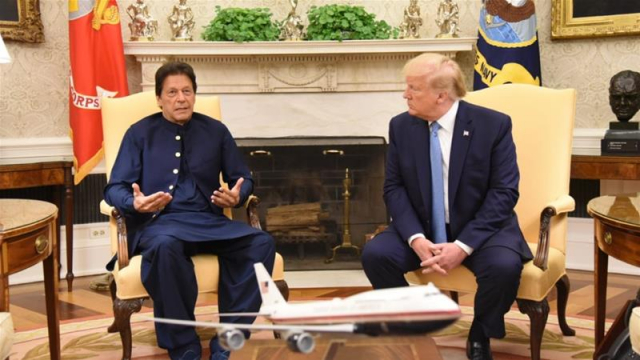When the Khan government started its term a year ago, a number of foreign policy challenges confronted Pakistan. Erstwhile allies had become estranged and longtime adversaries were bent on turning the country into a pariah state. Be it the issue of accessing IMF financing or getting a clean-chit from FATF, hawks in America had sensed an opportunity to economically squeeze the country into submission

A year later, the external landscape looks less menacing. The government has managed to create room for maneuver abroad. This is a result of the security and economic teams working in unison. From the start, it was clear that diplomatic priorities were being set with an eye on the US. That’s how the political year started and ended. In that context, the GCC majors were always the key to reach out to America.
So it was that the premier visited Saudi Arabia and the United Arab Emirates three times each in the last 10 months. The two heirs – MBS and MBZ – then obliged by making return visits shortly after. The Gulf visits back and forth also underscored the need to secure immediate bilateral injections to help finance the current account deficit. The two countries together pitched in $5 billion for Pakistan in FY19.
In November 2018, the China visit came two months and two overseas visits late. At home and abroad, much was read into how this visit didn’t come first and why some ministers had taken to critiquing CPEC. However, Beijing didn’t mind the optics, perhaps because it understood Pakistan’s precarious diplomatic position. Six months later, Khan made another visit to China at the Belt & Road Forum. In total, Pakistan received over $2 billion in fresh foreign assistance from China in FY19.
The premier’s visits to Malaysia, Turkey and Iran had a more political than economic element to them. More than ever Pakistan needed such brotherly countries in its corner; and these visits generated the missing goodwill. Hobnobbing with Qatar was a diplomatic dance pulled-off quite well. After Khan’s visit to Doha in January, the Qatari Emir visited Pakistan in late June. A week later, Qatar authorized $500 million for Pakistan as “first tranche” out of an unspecified assistance of $3 billion.
The recent visit to the US capped off the year rather nicely. A low-key visit made headlines far and wide, as Khan found in Trump a US president willing to give Pakistan another chance. (For more on the visit’s first impressions, read “Khan’s diplomatic coup,” published July 24, 2019). To India’s chagrin, Pakistan exploited the sound bites and the photo-ops for maximum effect. Now it remains to be seen how US and Pakistani governments go about making progress on mutual dependencies.
If the first year was about making amends, the second year has to be about tangible results. There are three main areas where Pakistan will look forward to international support.
First, Pakistan direly needs a satisfactory review at FATF this October. Even an extension of a year or two will do just fine in meeting FATF requirements. It would be an achievement if the American hawks and Indian saboteurs are kept at bay so that the review takes place on technical issues instead geopolitics. While China’s presidency at FATF should help, Pakistan still has to reach out to sympathetic corners in Europe.
Second is the external financing Pakistan needs from official creditors in excess of $17 billion this fiscal. It remains to be seen to which extent the reported bilateral commitments (China: $6.3 bn; Saudi Arabia: $6.2 bn; and UAE: $1bn) and billion-dollar expectations from multilaterals (World Bank: $1.3 bn; Asian Development Bank: $1.6 bn; and Islamic Development Bank: $1.1 bn) will be realized.
And third, getting an intra-Afghan dialogue going is something that both America and Pakistan need to happen soon. Pakistan has a role to play in helping Trump “extricate” from there, just in time for 2020 elections. Pakistan’s enabling role in a negotiated settlement is going to define its persona among NATO countries, particularly US and EU majors. However, continuation of violence in the region, even as all parties are intent on continuing to talk peace, may set back this process. Maturity is required on all sides.





















Comments
Comments are closed.